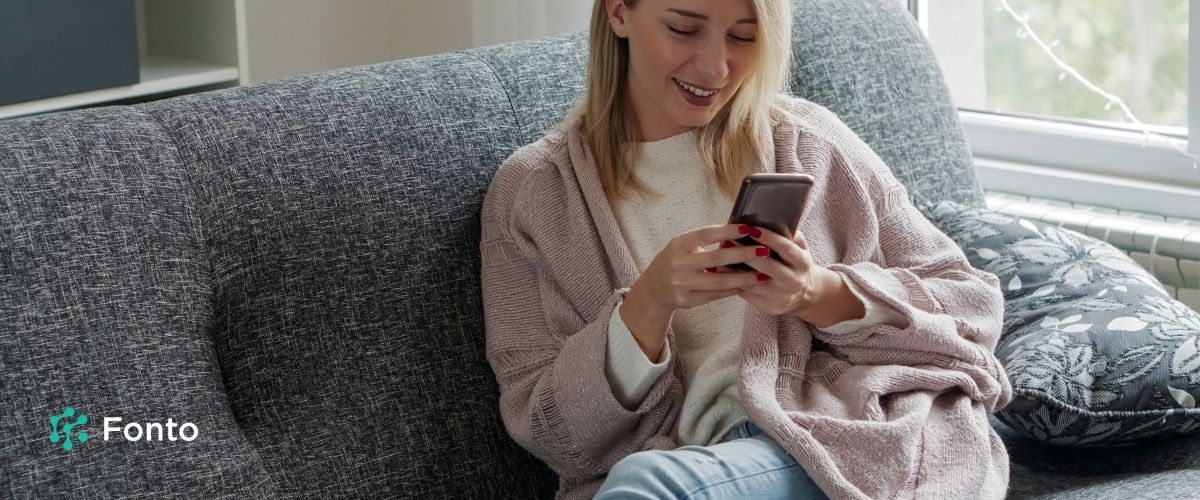Necessity is said to be the mother of invention and young Australians demonstrated this to be true during 2021 when covid restrictions put the brakes on many of their regular social activities. Based on their spending behaviour, 18-29 year olds quickly prioritised convenience and found new ways to take care of themselves. From quarantine haircuts to DIY self-care regimes and living room yoga, young Australians took matters into their own hands to ensure their health and wellbeing were maintained.

Drinking less
Transactional data collected by Fonto between January and December 2021 from more than 40,000 Australians shows 18-29 year olds also consumed substantially less alcohol than the rest of the adult population. While they were heavy users of rideshare services (49% higher than over 30s), they were not necessarily going out to drink alcohol in pubs and bars, spending 17% less in this category than the over 30s.

Alcohol 45% less
in 2021 than over 30
A distinct difference with young Australians when it comes to drinking is the lower consumption of alcohol at home. In 2021, on average, 18-29 year olds spent 45% less than the over 30s ($422 vs $773) on alcohol outside of licensed premises. There is also a significant difference in frequency, with young Australians purchasing alcohol around once a month compared to once a fortnight for the rest of the population.
In terms of total spend, young Australians also directed less of their discretionary income towards alcohol in 2021 compared to 2020 with consumption in venues down 8% and consumption at home down 12%. This may well be attributed to having less available income as covid restrictions severely impacted casual work in hospitality and retail where many 18-29 year olds, particularly university students, find employment.
Staying fit and healthy
While overall spend was also down slightly year on year on beauty products, fitness and sports retail, 18-29 year olds demonstrated they put a high priority on their wellbeing by spending more money and spending more frequently on fitness and beauty than older Australians.

Beauty products 31% more
spend than over 30s
In 2021, young Australians spent 31% more on beauty products than the over 30s, which is significant considering the over 30s typically buy more expensive, high-end brands. This may be due to their willingness to experiment when hair and beauty salons closed during strict covid restrictions. 18-29 year olds typically embraced the opportunity to learn new skills and replace professional services with do-it-yourself options at home.

Fitness & sports retail 16% more
spend than the rest of the population
As regular viewers of YouTube instructional videos, young Australians taught themselves how to cut their own fringes and dye their own hair as well as how to trim their own beards and moustaches. Learning new hairdressing skills no doubt had the added bonus of keeping boredom at bay during extended lockdowns – although with social media feeds filled with home hairdressing disasters, the professionals should have no concerns about job security.
One of the biggest impacts to the lifestyles of young Australians was the temporary loss of access to gyms and group fitness classes. Rather than let themselves go, young Australians spent an average of 16% more on fitness products and sports retail compared to the rest of the population. Popular alternatives to organised gym classes included fitness apps, yoga and Pilates in the living room, at-home weight sessions, and when they could get outdoors, cycling, running and the obligatory daily lockdown walk around the suburbs.
While they spent more than the over 30s in terms of total amount, young Australians spent less on fitness services (-11%) in 2021 than in 2020. This can be partially attributed to the pausing of memberships when gyms were not permitted to operate. Another consideration was the need for young Australians to confront the reality of the pandemic by tightening their belts and prioritising the essentials.
In the coming months, Fonto will continue to track the spending habits of 18-29 year olds to understand if these adjusted outgoings in 2021 will continue into 2022. Our six-monthly reports will show if new spending patterns become permanent habits and if so, how that impacts the industries servicing the interests and lifestyle choices of Young Australians.





